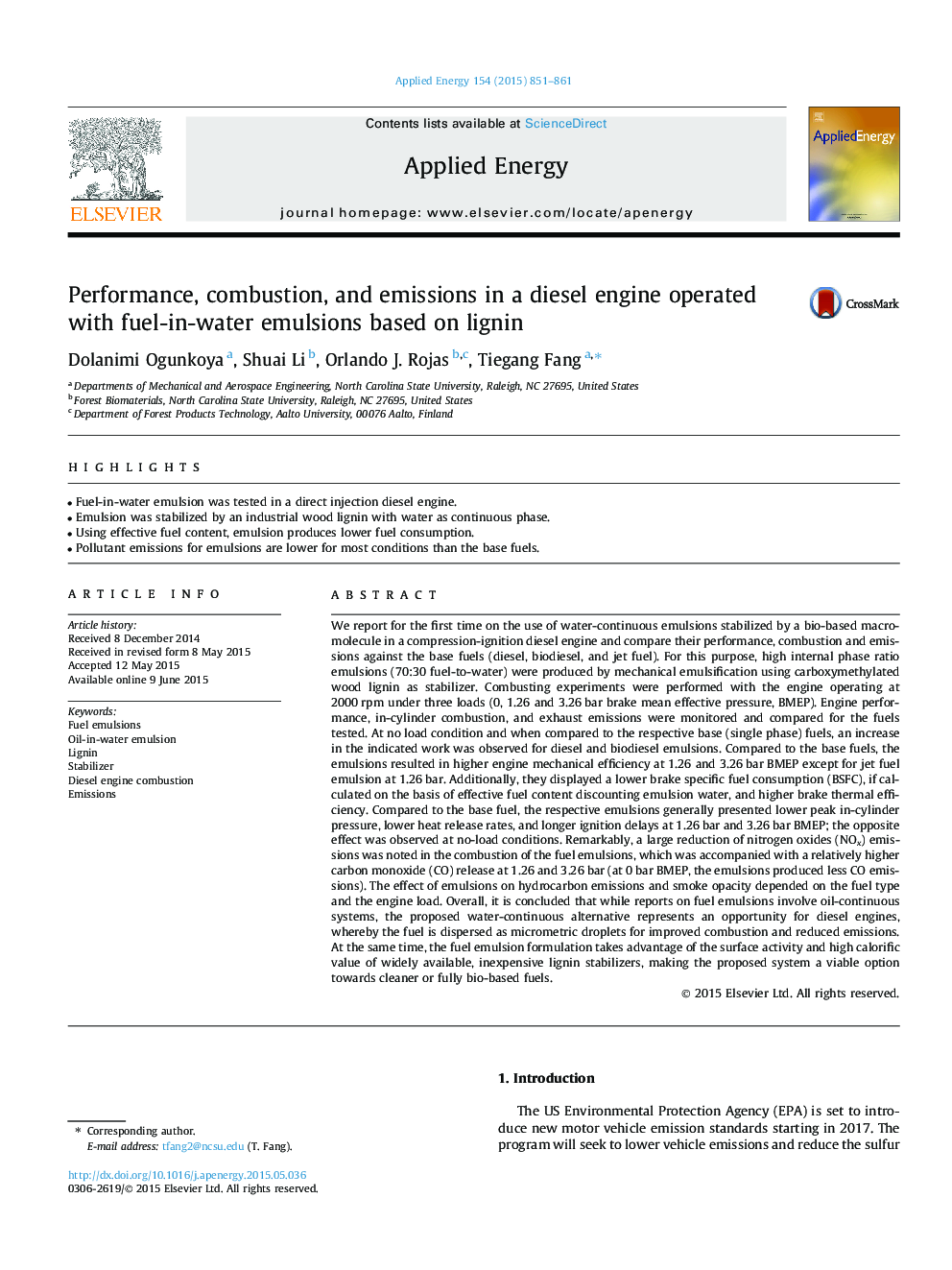| کد مقاله | کد نشریه | سال انتشار | مقاله انگلیسی | نسخه تمام متن |
|---|---|---|---|---|
| 6687036 | 501868 | 2015 | 11 صفحه PDF | دانلود رایگان |
عنوان انگلیسی مقاله ISI
Performance, combustion, and emissions in a diesel engine operated with fuel-in-water emulsions based on lignin
ترجمه فارسی عنوان
عملکرد، احتراق و انتشار در یک موتور دیزل که با امولسیون سوخت در آب بر اساس لیگنین کار می کند
دانلود مقاله + سفارش ترجمه
دانلود مقاله ISI انگلیسی
رایگان برای ایرانیان
کلمات کلیدی
امولسیون سوخت امولسیون روغن در آب، لیگنین، تثبیت کننده احتراق موتور دیزل، انتشارات،
موضوعات مرتبط
مهندسی و علوم پایه
مهندسی انرژی
مهندسی انرژی و فناوری های برق
چکیده انگلیسی
We report for the first time on the use of water-continuous emulsions stabilized by a bio-based macromolecule in a compression-ignition diesel engine and compare their performance, combustion and emissions against the base fuels (diesel, biodiesel, and jet fuel). For this purpose, high internal phase ratio emulsions (70:30 fuel-to-water) were produced by mechanical emulsification using carboxymethylated wood lignin as stabilizer. Combusting experiments were performed with the engine operating at 2000Â rpm under three loads (0, 1.26 and 3.26Â bar brake mean effective pressure, BMEP). Engine performance, in-cylinder combustion, and exhaust emissions were monitored and compared for the fuels tested. At no load condition and when compared to the respective base (single phase) fuels, an increase in the indicated work was observed for diesel and biodiesel emulsions. Compared to the base fuels, the emulsions resulted in higher engine mechanical efficiency at 1.26 and 3.26Â bar BMEP except for jet fuel emulsion at 1.26Â bar. Additionally, they displayed a lower brake specific fuel consumption (BSFC), if calculated on the basis of effective fuel content discounting emulsion water, and higher brake thermal efficiency. Compared to the base fuel, the respective emulsions generally presented lower peak in-cylinder pressure, lower heat release rates, and longer ignition delays at 1.26Â bar and 3.26Â bar BMEP; the opposite effect was observed at no-load conditions. Remarkably, a large reduction of nitrogen oxides (NOx) emissions was noted in the combustion of the fuel emulsions, which was accompanied with a relatively higher carbon monoxide (CO) release at 1.26 and 3.26Â bar (at 0Â bar BMEP, the emulsions produced less CO emissions). The effect of emulsions on hydrocarbon emissions and smoke opacity depended on the fuel type and the engine load. Overall, it is concluded that while reports on fuel emulsions involve oil-continuous systems, the proposed water-continuous alternative represents an opportunity for diesel engines, whereby the fuel is dispersed as micrometric droplets for improved combustion and reduced emissions. At the same time, the fuel emulsion formulation takes advantage of the surface activity and high calorific value of widely available, inexpensive lignin stabilizers, making the proposed system a viable option towards cleaner or fully bio-based fuels.
ناشر
Database: Elsevier - ScienceDirect (ساینس دایرکت)
Journal: Applied Energy - Volume 154, 15 September 2015, Pages 851-861
Journal: Applied Energy - Volume 154, 15 September 2015, Pages 851-861
نویسندگان
Dolanimi Ogunkoya, Shuai Li, Orlando J. Rojas, Tiegang Fang,
